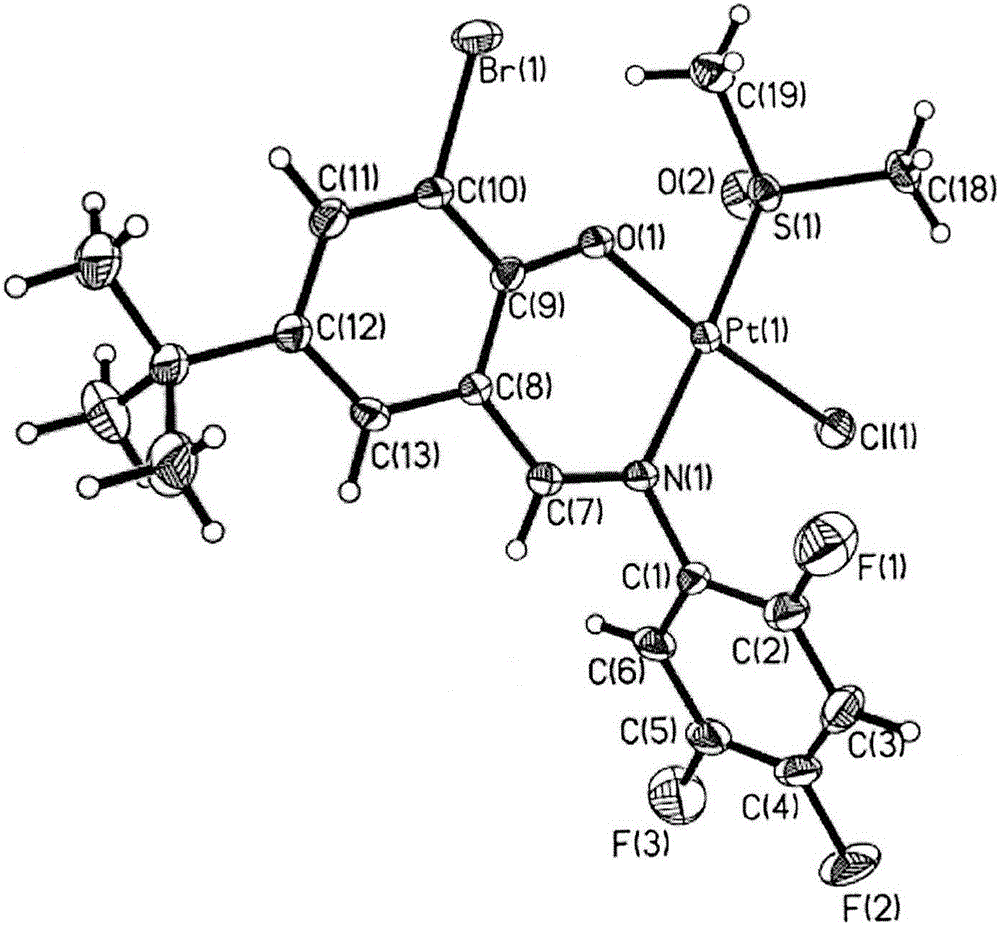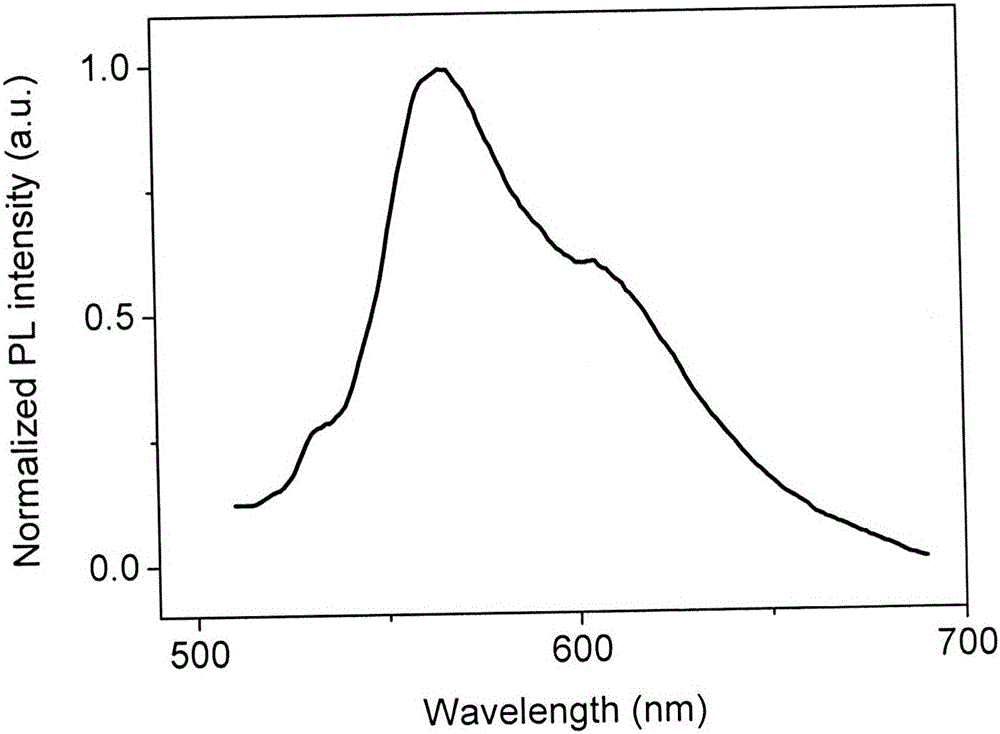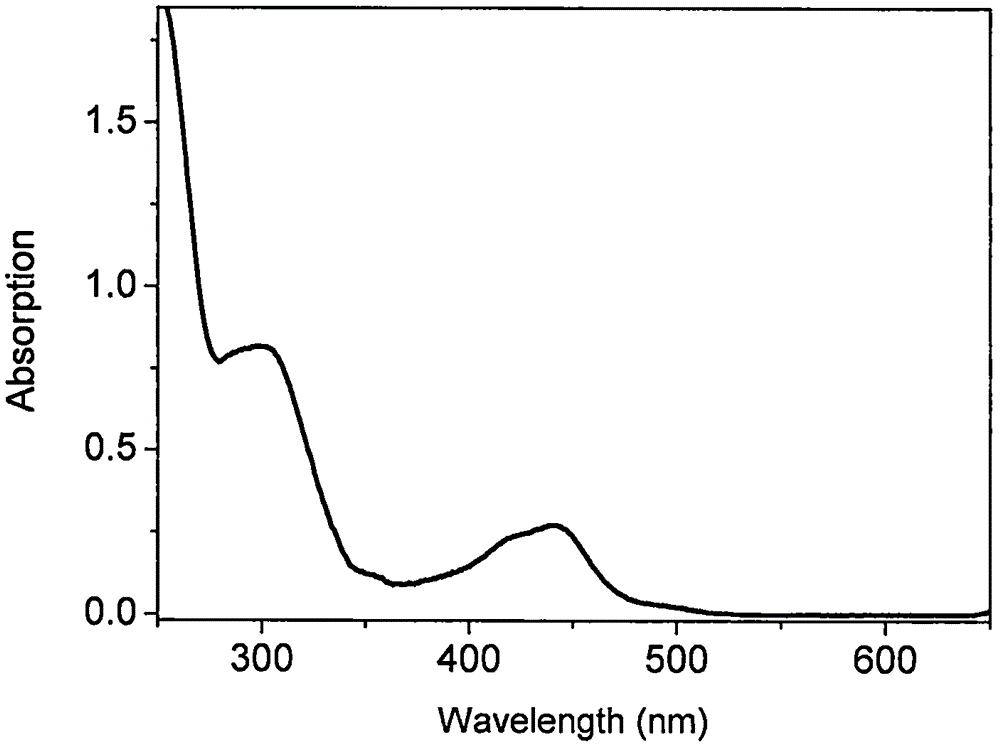Platinum green light material containing Schiff base ligand and preparation method of platinum green light material
A technology of Schiff base and luminescent materials, applied in luminescent materials, chemical instruments and methods, semiconductor/solid-state device manufacturing, etc., can solve the problems of low overall efficiency, achieve good electrochemical properties, mild conditions, and good thermal stability Effect
- Summary
- Abstract
- Description
- Claims
- Application Information
AI Technical Summary
Problems solved by technology
Method used
Image
Examples
Embodiment Construction
[0024] Implementation column 1
[0025] 1) Take 2,4,5-trifluoroaniline (397mg, 2.70mmol) and 5-tert-butyl-3-bromosalicylaldehyde (653mg, 2.54mmol), put in a 50ml round bottom flask, add 15ml of Water and ethanol, magnetically stirred, refluxed at 75 degrees Celsius for about 6 hours, cooled in a refrigerator until a large amount of orange-yellow solids precipitated, and filtered under reduced pressure. Wash with 95% ethanol for 2-3 times and dry in a drying oven. The product is orange-yellow powder, weighing 0.735, and the yield is 74.9%. 1 HMMR (CDCl 3 400MHZ) δ13.36(s, 1H, OH), 8.64(s, 1H, HC=N), 7.71(d, 1H, J=4.0Hz, Ar-H), 7.35(d, 1H, J=4.0Hz , Ar-H), 7.15-7.26(m, 1H, Ar-H), 7.05-7.11(m, 1H, Ar-H), 1.33(s, 9H, -CH 3 ).IR: 3390, 3076, 2960, 1629, 1514, 1454, 1371, 1267, 1197, 1155, 881, 773.C 17 h 15 BrF 3 NO(386.2063): calcd. C52.87, H 3.91, N 3.63; found C 52.99, H 3.96, N 3.68.
[0026] 2) Take the dried Schiff base ligand (252mg, 0.65mmol) and place it in a 50ml ...
PUM
 Login to View More
Login to View More Abstract
Description
Claims
Application Information
 Login to View More
Login to View More - R&D
- Intellectual Property
- Life Sciences
- Materials
- Tech Scout
- Unparalleled Data Quality
- Higher Quality Content
- 60% Fewer Hallucinations
Browse by: Latest US Patents, China's latest patents, Technical Efficacy Thesaurus, Application Domain, Technology Topic, Popular Technical Reports.
© 2025 PatSnap. All rights reserved.Legal|Privacy policy|Modern Slavery Act Transparency Statement|Sitemap|About US| Contact US: help@patsnap.com



